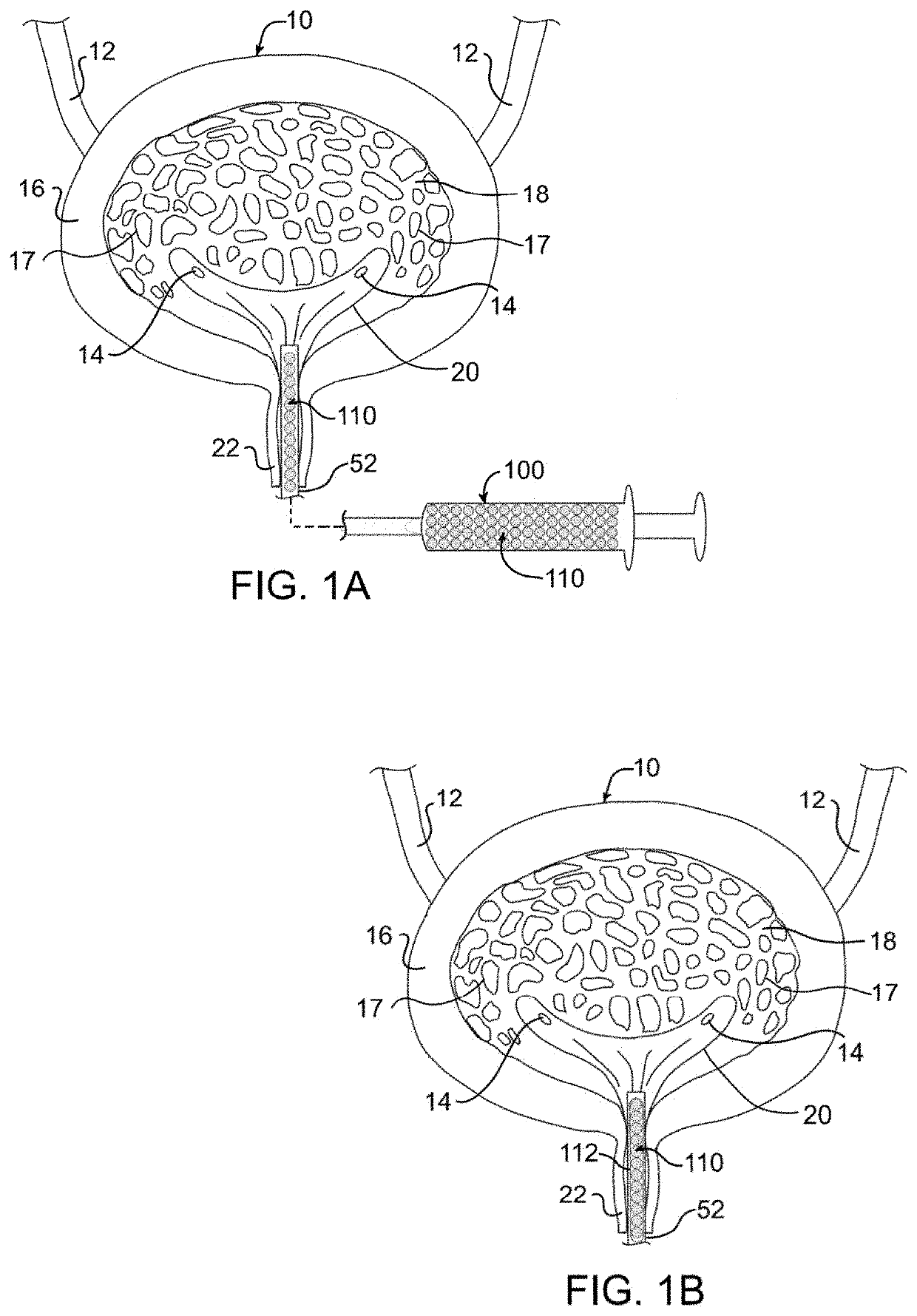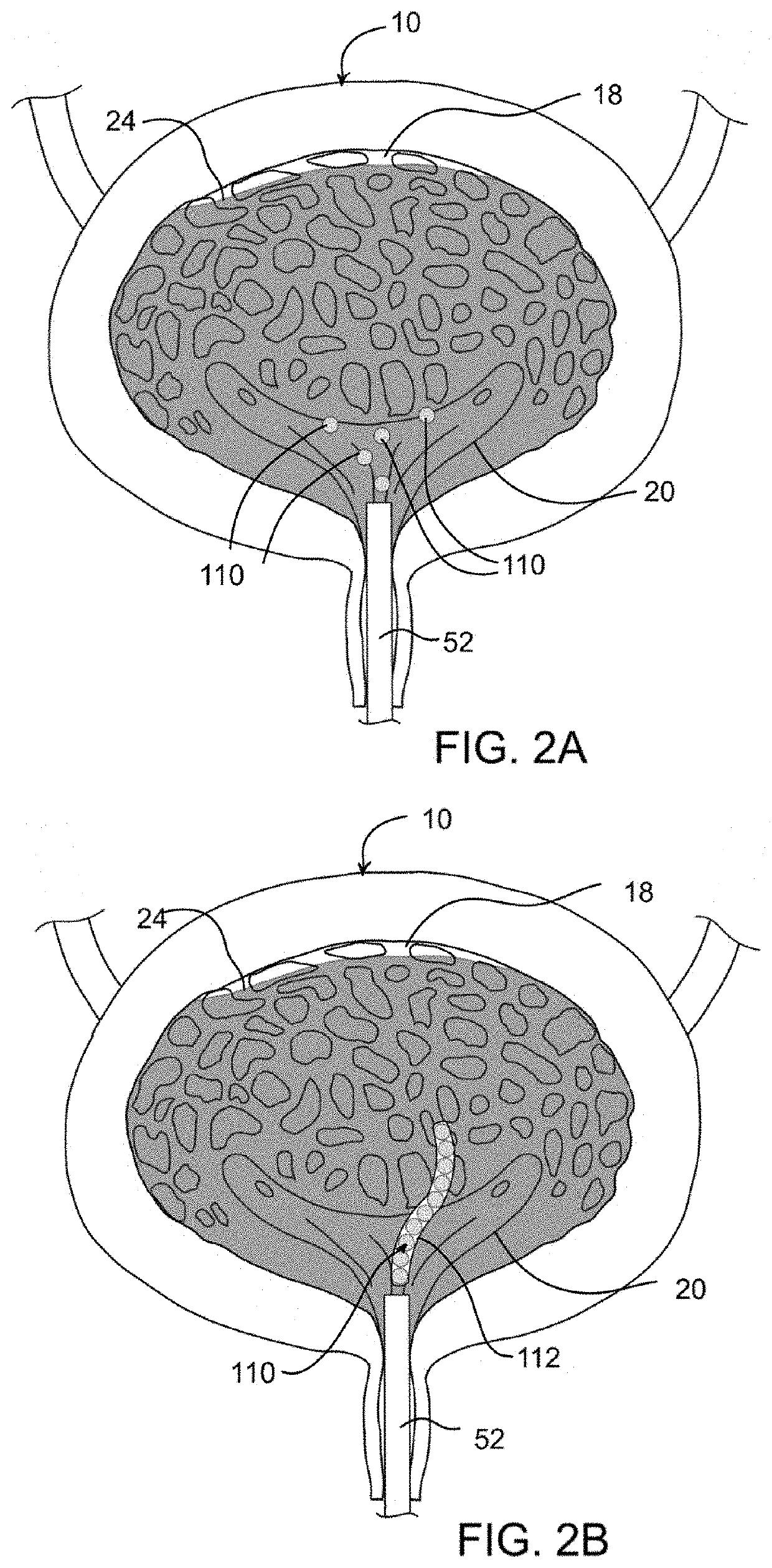Device and method for improving retention of a therapy in the bladder
a technology of a therapy and a bladder, which is applied in the field of devices and methods for improving the retention of a therapy in the bladder, can solve the problems of recurring infections, progressive resistance to antibiotics, and ultimately to kidney problems, so as to improve the effect of reducing or eliminating post-void residual volume, prolonging the duration of therapy, and reducing inflammation
- Summary
- Abstract
- Description
- Claims
- Application Information
AI Technical Summary
Benefits of technology
Problems solved by technology
Method used
Image
Examples
Embodiment Construction
[0043]It is understood that the examples below discuss uses of an implant device for either treating a bladder for an existing infection in the urinary tract or for prophylactic administration to prevent an infection from occurring. However, unless specifically noted, variations of the device and method are not limited to use only in the bladder, instead, the device can be used for general surgical procedures to prevent infections from developing in fluid filled organs. For purposes of this disclosure, the term fluid-filled organ can be substituted for bladder. Therefore, the methods and device will have applicability in various parts of the body under any minimally invasive or invasive procedure. Moreover, the invention may be used in any procedure where the benefits of the method and / or device are desired. Furthermore, because it is impractical to display each and every combination of features and aspects of various embodiments, it is understood that where possible, every aspect o...
PUM
| Property | Measurement | Unit |
|---|---|---|
| Size | aaaaa | aaaaa |
| Weight per unit length | aaaaa | aaaaa |
| Density | aaaaa | aaaaa |
Abstract
Description
Claims
Application Information
 Login to View More
Login to View More - R&D
- Intellectual Property
- Life Sciences
- Materials
- Tech Scout
- Unparalleled Data Quality
- Higher Quality Content
- 60% Fewer Hallucinations
Browse by: Latest US Patents, China's latest patents, Technical Efficacy Thesaurus, Application Domain, Technology Topic, Popular Technical Reports.
© 2025 PatSnap. All rights reserved.Legal|Privacy policy|Modern Slavery Act Transparency Statement|Sitemap|About US| Contact US: help@patsnap.com



